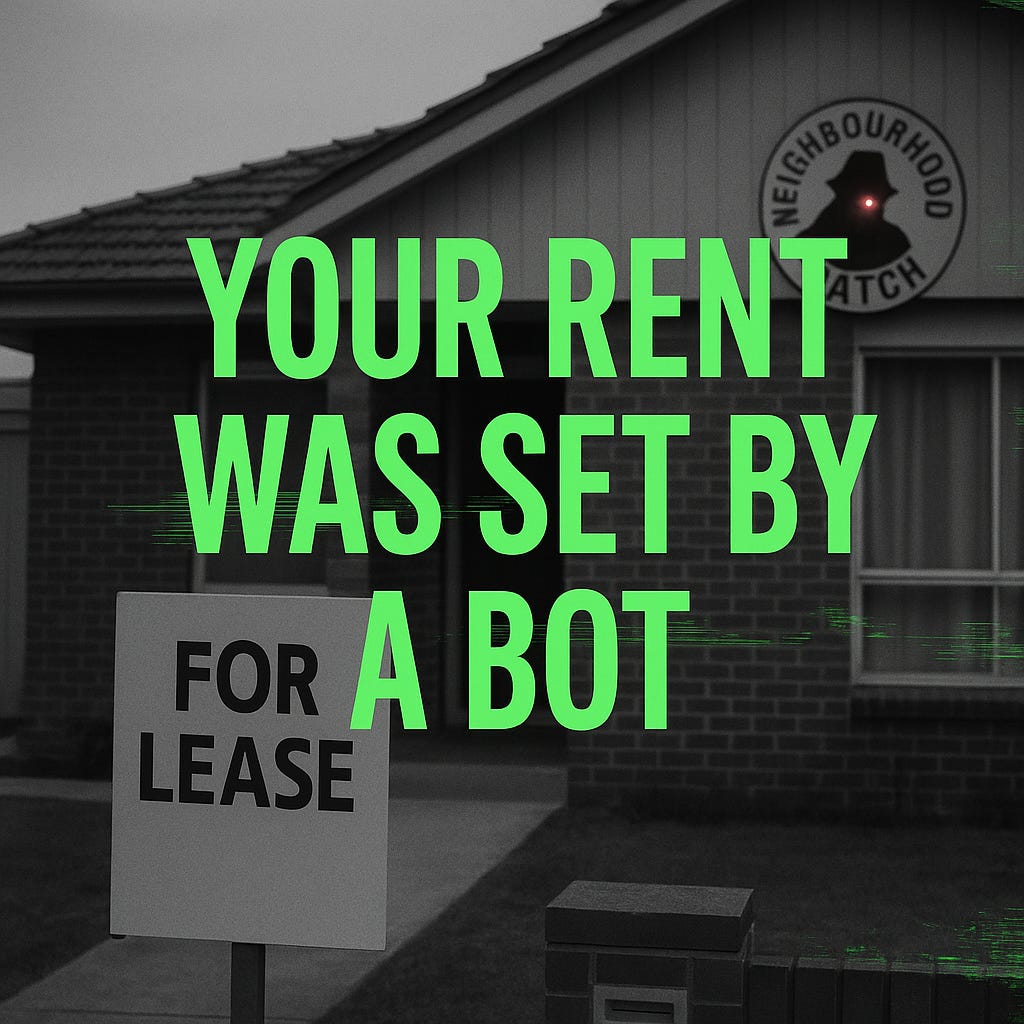Your Rent Was Set by a Bot
Inside the AI-powered logic setting rents, optimising yields—and eating communities. Your postcode is now a probability curve, not a place.
Welcome to the housing market in the age of algorithms.
In the latest State of the Housing Supply Report—the Australian Government's leading research outlining 111 pages of charts, plans and modelling—there’s not a single mention of algorithms, platforms, or the digital tools already reshaping housing logic in real time.
Meanwhile, overseas, entire rent structures are being coordinated by AI.
You might think rent is based on market trends, vacancy rates, or the going rate on your street.
But in many cities, it’s now shaped by platforms that treat renters not as people, but as patterns. And the patterns are getting sharper.
Imagine this: you go to a rental inspection in a tight market. You like the place. You apply. Behind the scenes, the landlord doesn’t just look at your application—they check their algorithm. The system doesn’t just tell them how much rent to charge. It tells them how long they can wait before they break you.
The tool factors in “vacancy decay windows”—how many days a listing can sit empty before landlords panic (a concept emerging in algorithmic vacancy tracking systems). It runs elasticity by postcode—how far rents can stretch before people snap (a practice grounded in vacancy and demographic analytics). It cross-checks the next school term, the weather forecast, the nearest train upgrade, and whether Airbnb bookings are soft that month.
And then it tells the landlord to hold out just a little longer.
In the US, platforms like RealPage have already pushed landlords to coordinate pricing, telling them not to undercut each other—even at the cost of temporary vacancy. But the story isn’t just about the US. The technology and logic are already being rolled out elsewhere.
In Australia, Build-to-Rent developers and PropTech platforms are starting to tap the same kind of models. Some scrape income potential by suburb to forecast the future rent ceiling. Others use clickstream data to see which properties people are hovering over online—then adjust prices on the fly.
We’re not just being priced out. We’re being priced ahead of time.
Land speculation is also being rewritten by code. The old model of buying up land in the path of development has been upgraded. Now, developers use AI to model where price surges are most likely based on infrastructure schedules, planning metadata, political signals, and satellite imagery showing how ready the land is. They no longer rely on insider information anymore. They’ve got predictive models.
And still—Australia’s official housing strategy doesn’t mention any of this.
In the U.S., housing regulators are only now beginning to confront the risks of AI-driven systems that entrench bias and scarcity—from automated tenant screening to rent-setting platforms like RealPage. See recent overviews by Matt Stoller and the Center for American Progress for how policymakers are beginning to respond.
Over in the UK, researchers are using AI to build “digital twins” of local housing markets to test and simulate different policy interventions before implementation.
Australia’s 2024 State of the Housing System report? No mention of algorithms, manufactured scarcity, or platform-driven price logic—anywhere.
We’re not immune. We’re just uninformed. The tools already exist. The platforms are already here. But the policy response is years behind.
This is the core tension: well-organised communities trying to hold ground, while private equity arms itself with data, platforms, and predictive firepower. Governments are years behind. Platforms are already optimising for yield.
So what do we do?
We need to expose this logic, demand algorithmic transparency in real estate, and build structural alternatives that aren’t just cheaper—but untouchable by manipulation.
Community Land Trusts do this. They’re not just affordable—they’re insulated. They remove land from speculation. They hold it for people, not price points. They can’t be priced out by an app.
This isn’t about being anti-technology. It’s about choosing which algorithms shape our lives—and which ones don’t get to.
Still here? Share this with someone who thinks housing is neutral. Or someone who still trusts the spreadsheet.
The algorithm is watching. So are we.


